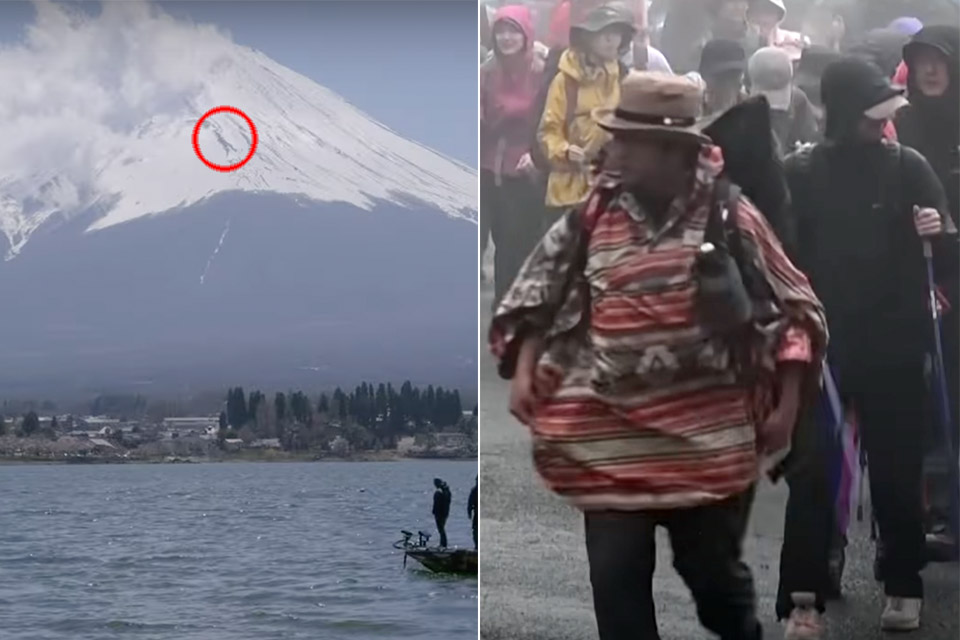Mount Fuji, Japan’s iconic symbol, draws thousands of climbers each year, eager to conquer its challenging slopes and witness the breathtaking sunrise from its summit. However, the allure of this majestic peak also presents significant risks, as highlighted by a recent incident involving a climber who needed rescuing – not once, but twice in a single week due to a remarkably consistent technological mishap.
The story, as reported by various news outlets, centers around a male climber whose repeated distress calls were triggered by an unfortunate series of accidental phone calls. While the exact details vary slightly across different accounts, the core narrative remains compelling: a seemingly simple technological issue became a major mountain rescue operation, emphasizing the vital role of preparedness and reliable communication when attempting to climb Mount Fuji.
The Double Rescue Operation
The climber, whose name has not been publicly released to protect his privacy, found himself in a precarious situation twice within the span of seven days. On both occasions, the trigger for the rescue was the same: his mobile phone accidentally dialing emergency services. The first incident involved an accidental call made while he was navigating the challenging terrain of Mount Fuji. The second, just a few days later, followed a similar pattern.
In both instances, Japanese mountain rescue teams responded swiftly and efficiently. They mobilized resources, including helicopters and ground crews, to locate and assist the climber. Considering the potential dangers of Mount Fuji’s unpredictable weather and rugged terrain, these rapid responses were crucial to his safety. The cost of these rescues, both in terms of resources and personnel, serves as a stark reminder of the potential consequences of ill-preparedness on the mountain.
The Accidental Emergency Calls
The repeated nature of the event raises some interesting questions. What kind of phone did the climber have? Was there a particular setting or malfunction contributing to the accidental calls? Did he have a protective case that might have triggered an accidental button press? The lack of detailed information regarding the phone’s model or its technical condition leaves room for speculation. Nevertheless, this unfortunate incident underscores the need for climbers to carefully consider their phone’s settings and handling, especially in challenging environments.
It’s possible that the climber may have inadvertently enabled a feature that made accidental calls more likely, or perhaps he had a phone with overly sensitive buttons. Regardless of the precise technical cause, the consequences were real and potentially dangerous, both for the climber and for the rescue teams. While it may seem like a trivial mistake, the potential for serious repercussions highlights the importance of understanding your technology and its limitations, particularly in high-risk situations.
The Importance of Preparedness on Mount Fuji
This incident serves as a powerful cautionary tale for anyone planning to ascend Mount Fuji. While the climber’s situation was unusual, it highlights broader issues related to safety and preparedness on the mountain. Proper planning and communication are essential for a successful and safe climb.
Essential Pre-Climb Checklist:
- Physical Fitness: Mount Fuji is a strenuous climb. Ensure you are adequately prepared physically before attempting the ascent.
- Weather Forecast: Monitor the weather forecast closely and be prepared for sudden changes. Mountain weather can be highly unpredictable.
- Appropriate Gear: Pack suitable clothing and equipment, including sturdy hiking boots, layers of clothing for varying temperatures, rain gear, and sufficient water and food.
- Navigation Tools: Carry a map and compass, or a GPS device with downloaded maps. Cell service can be unreliable on the mountain.
- First-Aid Kit: Pack a comprehensive first-aid kit and know how to use it.
- Communication Plan: Inform someone of your climbing plans, including your itinerary and expected return time. Consider carrying a satellite communication device as a backup.
- Phone Settings: Ensure your phone is in a protective case and check settings to prevent accidental calls.
Lessons Learned from the Mount Fuji Rescue
This incident serves as a valuable reminder of the importance of responsible mountain climbing. While the climber’s situation was caused by an unusual series of accidental phone calls, it highlights critical aspects of safety and preparation that apply to all mountaineers. The cost of mountain rescue operations is significant, both financially and in terms of the strain placed on rescue personnel. By being well-prepared and taking necessary precautions, climbers can minimize their risks and avoid placing unnecessary burdens on rescue services.
The story of the twice-rescued climber is not just a humorous anecdote; it is a cautionary tale about the potential dangers of technological mishaps in challenging environments. The combination of a potentially malfunctioning phone and a lack of thorough planning nearly had disastrous consequences. This highlights the need for meticulous planning, reliable equipment, and a comprehensive understanding of the inherent risks associated with climbing Mount Fuji. Respecting the mountain’s power and preparing accordingly is paramount for ensuring a safe and successful climb.
Beyond the Phone: Other Potential Hazards on Mount Fuji
Beyond accidental phone calls, climbers on Mount Fuji face several other potential hazards. These include:
- Altitude Sickness: The high altitude can cause altitude sickness, requiring climbers to ascend gradually and be aware of symptoms.
- Weather Conditions: Sudden changes in weather, including strong winds, rain, and even snow (even in summer), can be dangerous.
- Trail Conditions: The trails can be crowded, uneven, and steep in places, increasing the risk of falls or injuries.
- Crowds: The large number of climbers can also present challenges, leading to congestion and delays.
Understanding and mitigating these risks is crucial for a safe and enjoyable climb. Thorough preparation, responsible climbing practices, and a healthy respect for the mountain’s power are vital for a successful Mount Fuji adventure.




